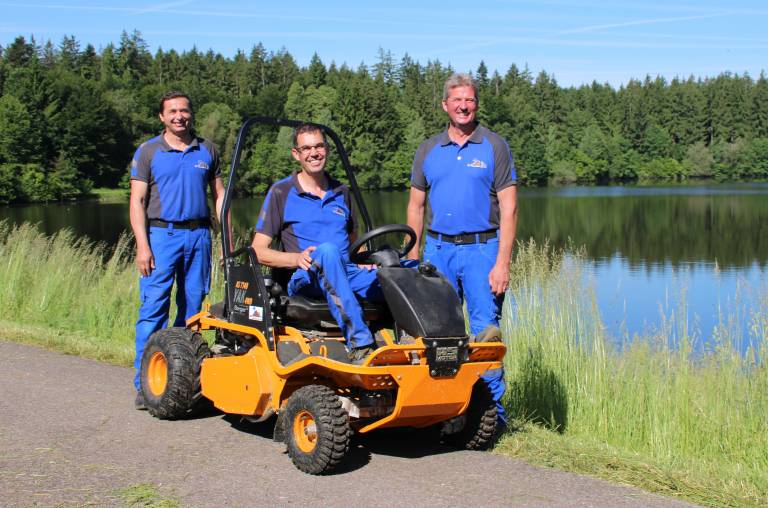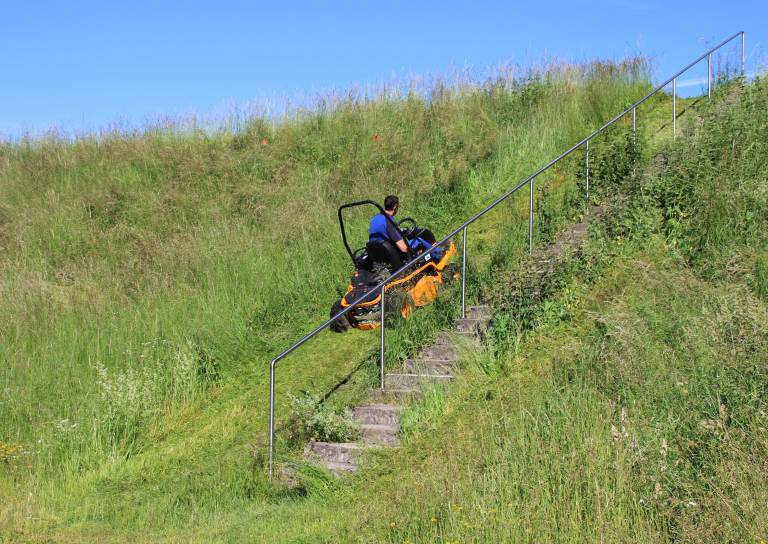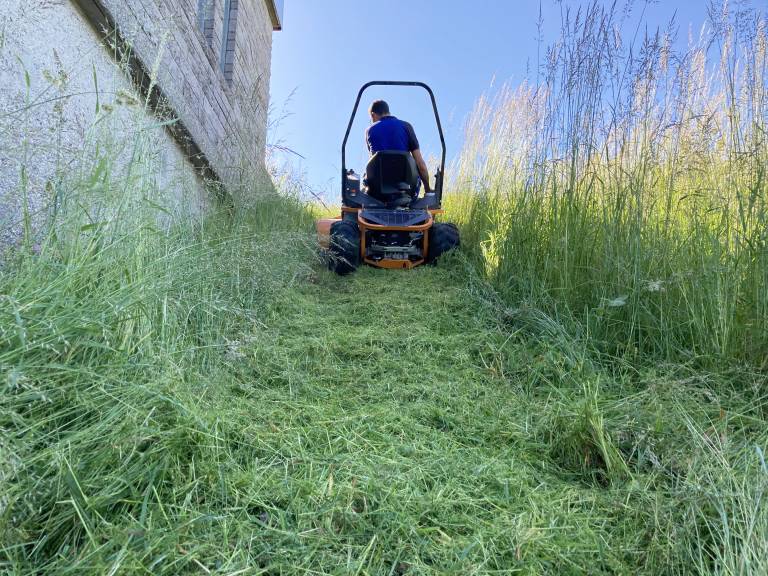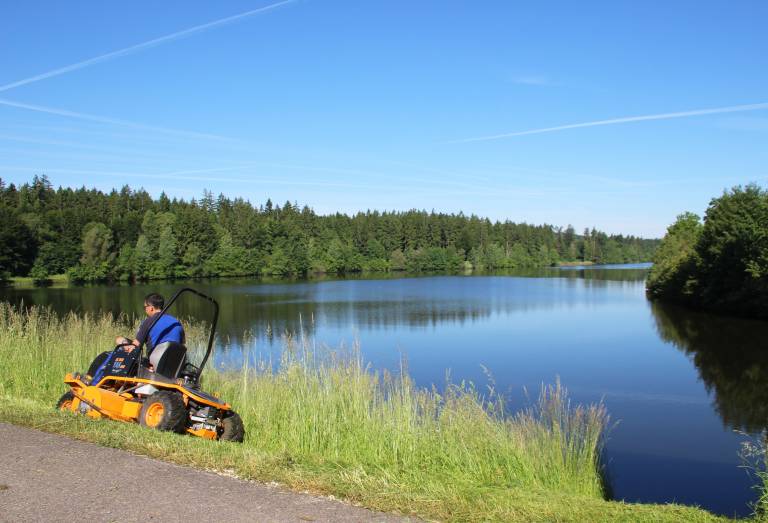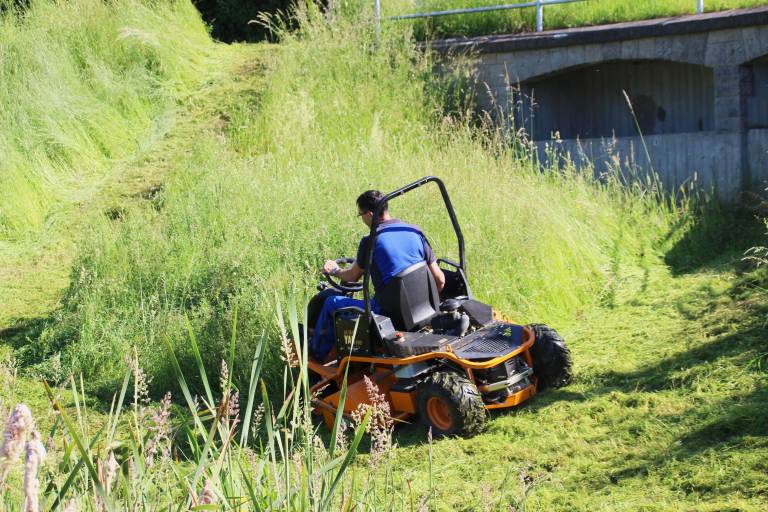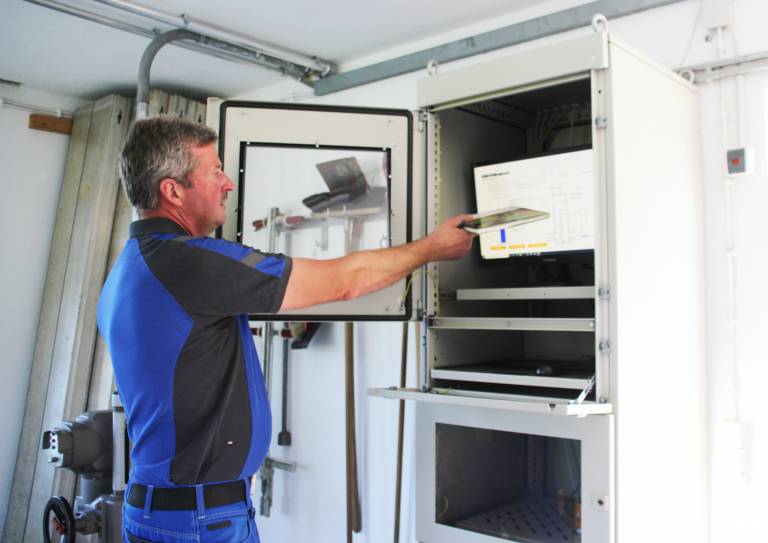Customer report: The hosts of the Ellwanger Seenplatte
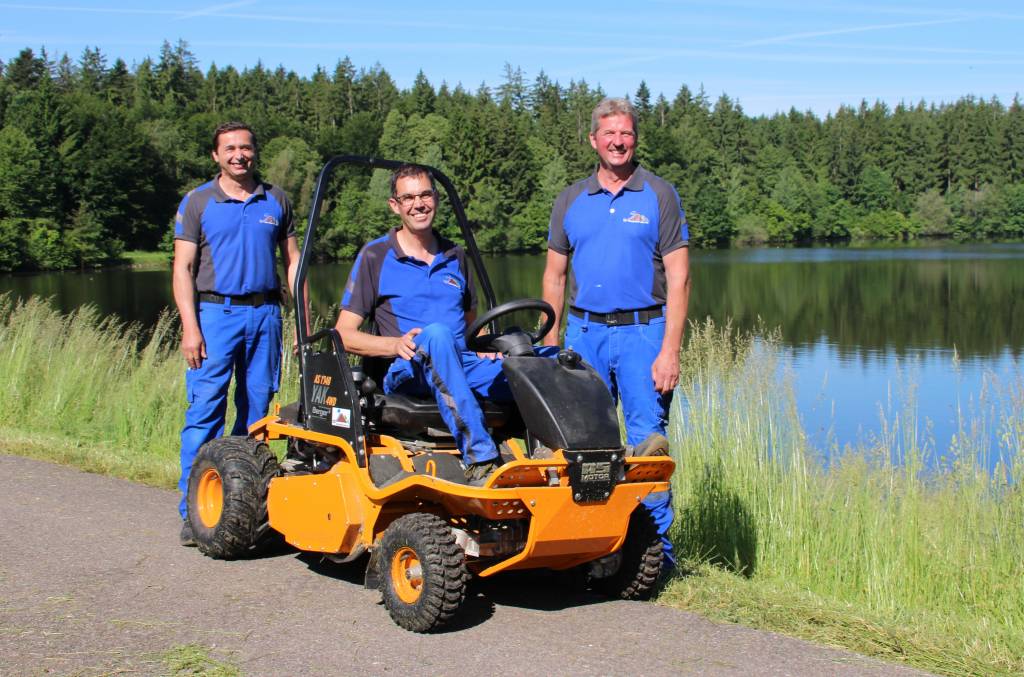
Hardly imaginable today, there were regularly devastating storms in the area of the upper Jagst in Baden-Württemberg in Germany until the 1950s. Every year, the river burst its banks several times and caused great damage. With the start of the construction of a century-long project in 1956, the turning point came and by 1982 a total of 15 storage and retention basins as well as embankments had been built, which today largely protect the area from flooding. The water board of the Upper Jagst is responsible for the maintenance of the facilities. An important helper in the daily work of the association's dam keepers is a Schlegel ride-on mower AS 1040 YAK 4WD.
"Actually, we are only dam keepers," says Martin Schmid, foreman at the association's construction yard, modestly when asked about his job. But the tasks of a dam keeper are very far-reaching. They maintain and check all the facilities and thus ensure that they function in an emergency and that protection against floods is also guaranteed. Martin Schmid and his three colleagues from the building yard are therefore - together with their colleagues in the office - the caretakers of the Ellwangen lake district. All in all, the lakes and ponds cover an area of 174 hectares and have a total storage capacity of eight million cubic metres.
Protect healthy dams
"Besides the technical maintenance and the constant control of the water levels, our work also includes the mowing of the plants and the care of the trees," says the trained agricultural machinery mechanic. "The dams are particularly important here, because they must not be damaged so that they can hold the water in an emergency. That is also the reason why we cut down the dams almost completely every few years. The logs must not exceed eight centimetres. Otherwise, the risk of the roots making the dam unstable is too great," he explains. "Just as important, for the same reason, is a healthy sward, the dam must be nicely overgrown. Because if the wasboden is torn out and loose, that's a dangerous surface to attack during heavy rains."
"In total, we have about 200 hectares to mow regularly. Until two years ago, we mowed the dams and other smaller areas completely with a brush cutter. That was not only time-consuming, but also exhausting." In their search for an alternative, the dam keepers' main concern was the desire for a mower that no longer required them to run behind it. "When choosing the right machine, it was also important that it was suitable for use on slopes and that it had the right power," Schmid adds about the requirements for the new purchase.
Foreign bodies and steep embankments - No problem with the AS 1040 YAK 4WD
The decision was then made - after intensive market research - in autumn two years ago for an AS 1040 YAK 4WD. "We got our YAK in December 2019. That means it spent the first few weeks well looked after and in peace in our building yard," Schmid says with a smile. In the meantime, it has been in use for the second season and fulfils the set requirements in full. "With the YAK, we have been able to significantly reduce the number of times we have to use the brush cutter and thus also reduce the workload enormously. In addition, the area performance of our new fleet member is outstanding. On top of that, the flail mower is ideal for foreign bodies lying in the tall grass. Because that's what we often have to deal with. When the lakes are dammed, wood or the like is washed up, which then remains in the grass when the lake is lowered again. The YAK makes a short rustling noise and that's it. Nothing gets broken," the dam keeper enthuses. The reason for this is that the pairs of flails, which are attached to the horizontal rotor in an oscillating fashion, do hit the foreign object, but can fold away and take evasive action. The risk of damage to both the blades and the machine is thus significantly reduced. "Not to be forgotten is the YAK's excellent slope capability, which is of course essential for us," adds Schmid when talking about the advantages of the flail mower. "The low centre of gravity is of particular benefit to us when mowing the steep embankments."
Protection of valuable flora and fauna
In addition to flood protection, the basins, as the dam keepers correctly call them, have another task. "The top priority is flood protection for the buildings along the Jagst. But we also use the basins to store water. We then release this into the Jagst during low water periods and can thus increase the self-purification power of the river. This protects fish, for example, which would otherwise not be able to survive in the Jagst in dry summers," Schmid explains. Thus, nature conservation is a very welcome side effect of the construction of the storage and retention basins.
Numerous nature reserves and FFH areas have also been created along the basins in this context. Especially there, ecologically oriented green space maintenance is of course indispensable. Topics such as preservation of habitats and refuges, correct maintenance periods and frequencies or strip mowing are not foreign words for the dam keepers. "Depending on what needs to be protected, we plan our work. So we also use mowing schedules to determine which area is mown when. For example, we mow wet meadows early in spring and then again late in autumn. The reason for this is that the plants growing there must have withered before mowing and should already have died out in order to ensure their continued existence," says Schmid, giving an example of sensible mowing according to sustainable principles.
By boat to the island
Islands are also part of the dam wardens' operational areas. "We also have two islands at the Stockmühle reservoir. We only mow these once a year. The aim is to keep these areas free of woody plants, as they are home to special breeders such as the lapwing. They would no longer breed there if the island were overgrown with bushes. Here, of course, due to mowing once a year and the then very high and partly woody grass. our YAK is the ideal machine. Up to now, we have been doing the work there with a with a brush cutter. Smiling, he adds: "But we already have a few ideas and have thought about building a boat with which we can transport our ride-on mower over to the island in the future.
Local recreation in beautiful surroundings
Far beyond the region, the entire area of the Wasserverband obere Jagst has not only become a real enrichment for the landscape and nature, but it has also contributed enormously to improving the recreational and leisure value. What has emerged is a popular local recreation area with opportunities for swimming, camping, hiking, fishing or even sailing. "Therefore, we must not forget to mention that the mowing pattern of our YAK is also very good and significantly better than with a rotary mower. Even under extreme conditions, like this very wet spring, we are very satisfied with it. Since we also partly mow sunbathing lawns, this is definitely an important issue for us, and the visual appearance plays an important role here," Schmid concludes.
